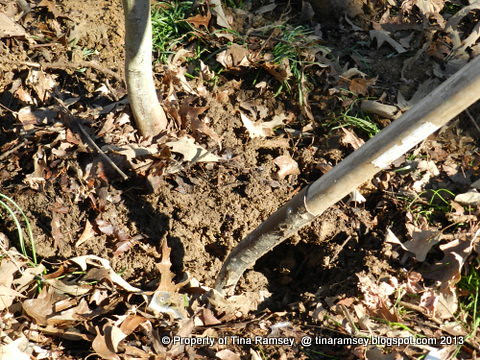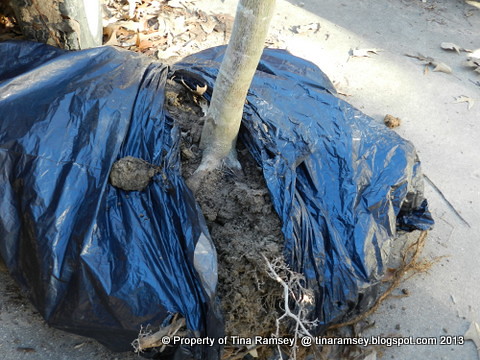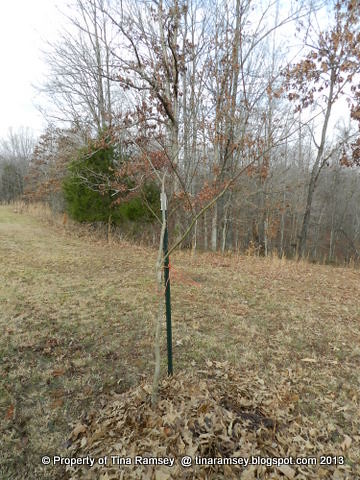
Sometimes we gardeners find we must move plants, including trees. The reasons to move a plant vary and can range from simply needing to move a plant to a new location in the garden because perhaps it has outgrown its location or is not doing well in that location, all the way to needing to move the entire garden due to an impending move. The latter is the reason I find myself in the position of moving plants, trees, shrubs, bulbs, grasses, and hardscaping. Our new farm is coming along and yes, I surely have my priorities straight-the garden goes in first. It is really a simple decision. You see you can build a house in a few short months up to about six months, but you cannot grow a plant in the same short time. Additionally, plants must be moved at the right time. The right time will depend on the plant and other factors I will try to outline here.
So far the plants I have moved from Tiger Gardens to the new Tiger Way Gardens include:
[Trees]
5 Japanese maples
5 10' tall crepe myrtles,
'Empress of China' evergreen dogwood
Korean dogwood (Cornus kousa)
Korean maple (Acer pseudosieboldianum)
Chinese redbud 'Don Egolf'
[Shrubs]
12 Oakleaf hydrangeas (half of them died and the other half are being eaten by the deer)
14 PG hydrangeas
5 'Raspberry Profusion' abelias
7 rhododendrons
4 'Annabelle' hydrangeas
3 'Bella Anna' hydrangeas
2 'Great Star' hydrangeas
2 'White Dome' hydrangeas
32 Bigleaf Hydrangeas
5 Butterfly bushes
1 Leucothoe
14 viburnums
8 Japanese snowball viburnums (three died so now five remain)
Several spiraeas
[Grasses]
3 clumps of plume grass (Erianthus ravennae)
3 'Northwinds' switchgrass
Pink Muhly grass
[Perennials] too many kinds to count but they include:
Turtlehead
Heucheras
Helleborus
Japanese anemones
Irises
Approximately 100 or so cultivars of daylilies
Amsonias
Tatarian asters
New England Asters
Sedums
Catmint (my MOST successful move as the clumps all love the new location in full sun!)
Salivas
Coneflowers
Shasta daisies
Cannas
Mums
Joe Pye weed
Compass plants
50 or so Peonies
Pulmonarias (not sure if they will make it as they are difficult to move)
Carex 'Ice Dance' (I love this tough little grass like plant!)
[Bulbs[
6500+ daffodils
Muscari
Scilla
Lycoris radiata
Note: I have only listed here what I have moved to the land from my current garden. I have not listed all that I have planted on the farm. That will come at another date. It includes a whole orchard and several trees. Gotta get that shade and grow your own food theme going! As you read this I will most likely be outside digging and moving more trees. Sigh, a gardeners' work is never done!
Today's post is focused on moving the Japanese maples, but based on the list above of just what I have moved from Tiger Gardens so far, you can see I am fairly experienced at moving plants. Each time I move a plant I always anticipate that plant will live and thrive and be happy. I never contemplate losing a plant but in the past I have lost some plants. It is to be expected at times. Most of the time my failure at losing plants results from: moving the wrong plant (evergreens do not move well in my experience), moving the plant at the wrong time, not digging enough roots with the plant, or not watering enough or watering too much! It is a fine line you cross when you chose to move plants.
I have thirteen Japanese maples growing in Tiger Gardens. Two are the dissectum types and are moveable even tho one is fairly large and has been here five years. I have not tackled these maples yet because the area they will move to is not ready. The remaining eleven Japanese maples are the palmatum type. They range in size from two feet tall to about 18' tall. The 12 and 18 footer trees are much too big to move. Those two and one other Japanese maple in the front garden are the only Japanese maples I will not attempt to move. The rest average about 6-8' tall with a trunk diameter of about 1" to 2" with the exception of a short Japanese maple.

The above tree is the largest Japanese maple and the trunk is about 2". It is a named variety called 'Burgundy Lace'. I started digging this tree first because it is the largest tree here I thought I could move. I thought if I could dig it then I could dig anything. I have to be honest, I almost gave up the fight. This tree was pretty stubborn. One of the reasons I love Japanese maples is that I find they are quite resilient. This one was no exception to that rule. Its roots grew deep and strong. I started my dig about 2' feet from the trunk. I knew I would have to cut the main anchor roots in order to get the tree out. What I was not prepared for was that those anchor roots grew quite deeply into the ground. I started by making a ring around the tree just to feel out the root system. I slowly worked this ring all around getting deeper and deeper with my shovel at each pass. It would've helped me tremendously to have had a longer shovel. My shovel is only about one foot deep and I really could've used a spade about two feet long. To overcome the shortness of my shovel I removed soil and made a channel around the tree as you can see in the first picture. This enabled me to go deeper and with perseverance I finally got the tree loose from its spot.
Once the tree was free I wrapped the root ball with some large black garbage bags. These root balls of the trees I am moving are much too large for any pots I have here. I have to tell you I was very happy when the tree came out of its location with a significant root ball such as the one pictured above. Of the five Japanese maples I dug on this day three came out with awesome root balls, two came out practically bare root. Fortunately enough for me and the trees this is an excellent time to move trees whether they are bare root or potted (still in soil). This is because the trees are dormant and will not have to be stressed by trying to support a canopy of leaves. Additionally, as long as the soil is above 40 degrees or so the roots will continue to grow and provide nourishment to the trees. The only reason I will have to concern myself with these newly transplanted trees during this time of the year is if the soil freezes for an extended period of time the trees may get dehydrated due to not being able to take up moisture. Additionally, since the roots are not established they are not able to anchor the trees in their new spots on the farm. To compensate for this I have staked the trees only temporarily. Since these deciduous trees have no leaves they most likely will not fall over but there is always a possibility of that. Also, it may take up to one year for the newly transplanted trees to finally get anchored well and once spring arrives that canopy of leaves should pop out.

Technically you can move plants, including trees, any time of the year-as long as the ground is not frozen and as long as you are prepared to water. Just this year alone I have moved crepe myrtles in early spring, the cornus species in the summer, and several other trees during the fall. This is not the ideal way to go tho because when you move trees and shrubs and even perennials during the spring or summer you need to be prepared for some serious transplant shock as well as be prepared to water a lot. Fall is usually not a bad time to move or plant trees because by the time September and October roll around the trees are beginning to go dormant and rains have usually returned to ensure a good continuous supply of water.
Another way aside from timing the move of your trees to ensure the transplant job will be successful is to root prune your trees. I did root prune at least one of the five Japanese maples I just dug up. I saw no difference between digging that one Japanese maple versus the other four non-root pruned Japanese maples. Perhaps it will settle in faster but perhaps not. If you do root prune plan to do so at least one season prior to the scheduled move.
One more tip on ensuring success with transplanting large trees and shrubs. There are several products on the market that will help with stimulating roots and you can also purchase mychorrhizae to help with settling in the plant. In my case I use a liquid concentrate I add to the water I use to water in my newly transplanted trees. Any kind of starting solution or additive will work if used according to the directions. I also am a firm believer in the addition of organic matter such as compost, rabbit droppings, eggshells, and bone meal. I add all of these if I have them available at the time of planting. If they are not available, I will come back later and top dress the plant.
Only time will tell if I am successful with the move of my large trees but either way I can rest assured I have done everything in my power to ensure their successful transplant. During the winter if I am curious as to the health of these newly transplanted trees I will do a scrape test to check and see if they are still green under the bark. I am always reassured when I see green on my newly transplanted trees. The 20' river birch I transplanted from Alabama in November is still green so I am pretty sure it is okay. I bet these Japanese maples will be fine too....
in the garden....
Happy New Year Everyone! Be safe!
My goodness. I hadn't thought about you moving so many trees. Planting new trees-yes; but not the moving of them. I hope they all settle into their new home. You are going to have such an amazing property with all these beauties and your orchards. Happy digging and Happy New Year!
ReplyDeleteOh my gosh ~ that is a LOT of stuff you have moved out to the land. It is going to be beautiful there as everything takes hold and starts growing in their new home.
ReplyDeleteHave a wonderful 2014 ~ FlowerLady
My first visit to your blog and I was exhausted just reading ;) You've done pretty well thus far and I wish you well with successful moving of all you have yet to do.
ReplyDeleteHappy New Year to you and your New Garden!
Wow, you have been one busy gal moving plants! I only move something when absolutely necessary but otherwise, I am too lazy. Ha, lazy is not in your vocabulary these days, that's for sure! I know this is all fun to you when work to someone such as myself. I hope all your beauties are happy in their new home and cannot wait to take a peek at them next spring!
ReplyDelete